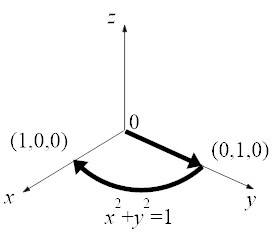| ME5331 MIDTERM EXAMINATION |
| 4:00-5:20pm, October 18, 2021 |
| Closed book/note/No calculator |
2. Expand
|
3. If u = x y and v = [( − x2 + y2)/2], compute1
|
4. Compute
|
|
5. Given y3 − 3 x y − x = 1, compute y′(x).
6. Does
|
7. Find the shortest distance from (1,2) to the line, x+2y=2.
8. Exchange the order of integrations for
|
9. Evaluate
|

10. Compute
|
| Solution |
1.
|
|
|
|
|
|
|
|
|
|
|
|
|
|
|
|
|